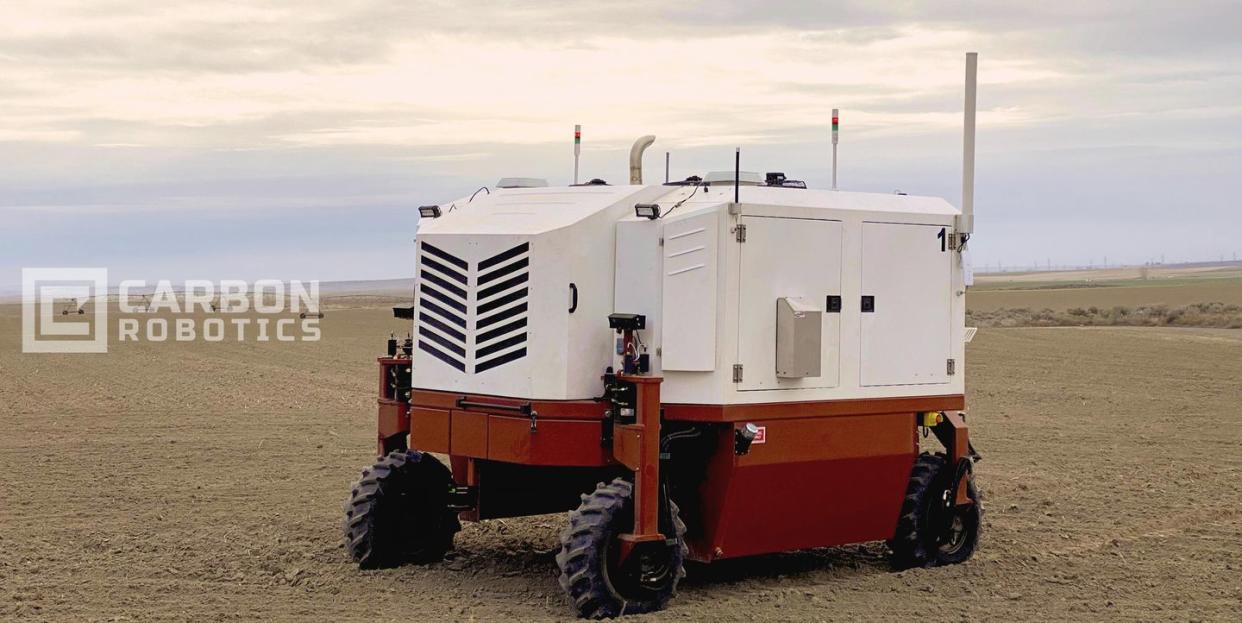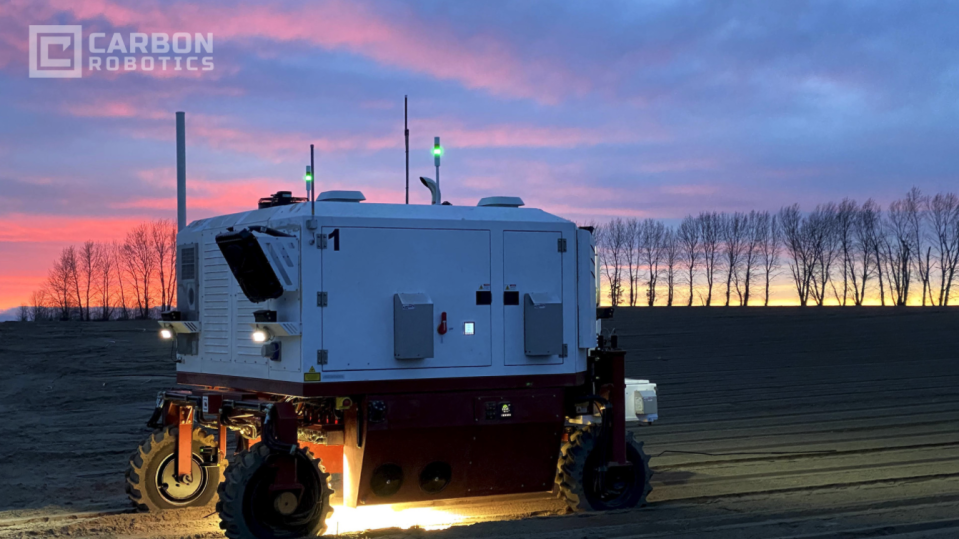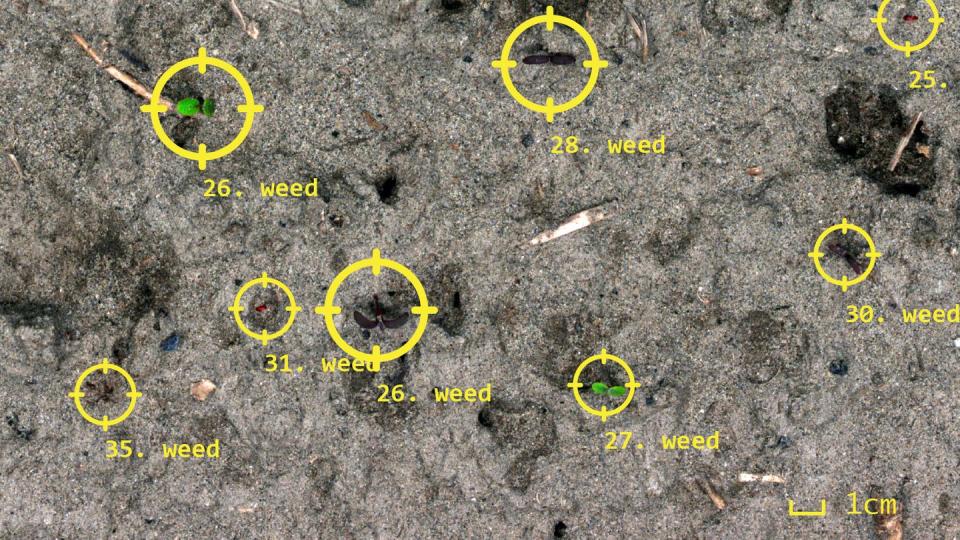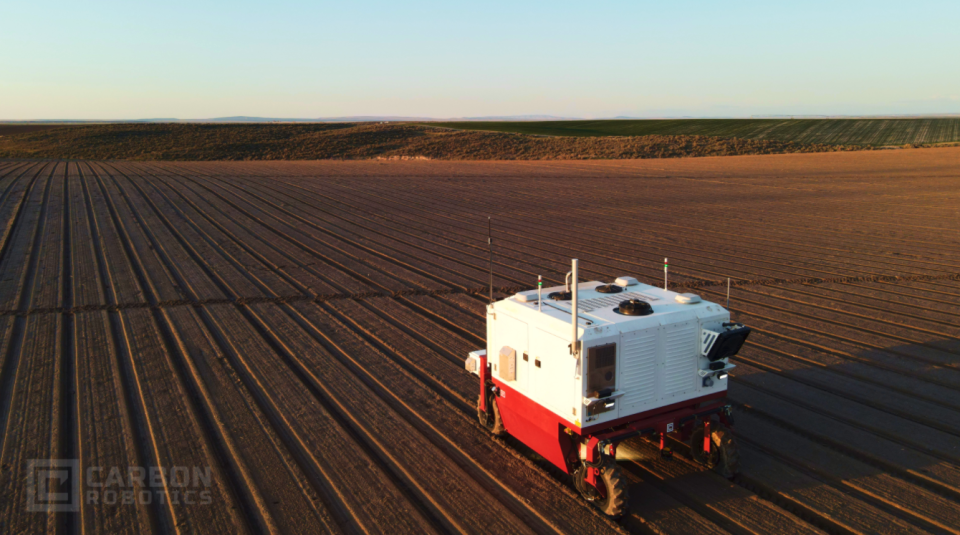This Badass Robot Uses Lasers to Slay 100,000 Weeds Per Hour

- Oops!Something went wrong.Please try again later.
A new farming robot can weed up to 20 acres in a day, saving labor and chemicals.
The "Autonomous Weeder" uses lasers, a supercomputer, GPS, and computer vision.
Weeds are a costly nuisance for farms of all sizes, so the robot could drastically improve farmers' bottom lines.
Farmers, prepare for the future: there's a new robot on the block that can slay 100,000 weeds per hour—all night, every night.

This "Autonomous Weeder" stands out from other robots in its class because it uses high-powered lasers to zap pesky sprouts into oblivion. And because the bot uses thermal energy to eradicate weeds, rather than a physical intervention like tilling, the machine doesn't disturb the soil below. That means reduced farm costs, no more herbicides, and most importantly, happier, healthier crops.
➡ You like badass machines. So do we. Let’s nerd out over them together.
So how does it work? The chassis, or the load-bearing part of the tractor, uses GPS and computer vision to autonomously drive within the bounds of a field, navigate furrows, and automatically turn around to start on the next row.
While the tractor moves around its plot at about 5 miles per hour, its 12 high-resolution cameras continuously scan the ground below. Meanwhile, an onboard supercomputer uses machine learning to identify unwanted plants in mere milliseconds, says Carbon Robotics, the company that built the Autonomous Weeder.

Once the robot pinpoints undesirable weeds (as shown in the photo above), it fires its eight carbon dioxide lasers at them. Carbon dioxide lasers run electricity through a gas-filled tube to produce invisible, far-infrared light. Because there are reflective mirrors on the ends of the tube, this light is ultra-powerful and can cut through various materials, from wood to steel.
The Autonomous Weeder's laser array can kill a combined 100,000 weeds per hour, or about 28 weeds per second. As a result, Carbon Robotics says a single robot can weed 15 to 20 acres in a day, replacing "several deployments" of analog hand-weeders. For context, a vegetable farmer told The Seattle Times he usually needs to hire a 30-person crew for a full day of work to weed 30 acres of organic onions.

That efficiency is a big deal for farmers' bottom lines, as crop inputs and labor are two of their most significant costs. According to the U.S. Department of Agriculture, the average farm brings in just $91,800 in net income. Crop inputs like chemicals, fertilizers, and seeds make up about 28 percent of farmers' total spending on average, and labor constitutes about 13.8 percent.
Carbon Robotics says it wants the Autonomous Weeder to be a solution for all different kinds of farmers. They say it's designed for farms from 200 to "tens of thousands" of acres. The company even offers leasing options so speciality farms can test out the robot on tricky crops like broccoli and onions. While all of the 2021 models are already sold out, preorders are open for the firm's 2022 line.
It looks like the Autonomous Weeder could meaningfully improve outcomes for farmers who have less land and smaller profit margins, increasing not just their income, but their quality of life.
Plus, you know, lasers are cool.
🎥 Now Watch This:
You Might Also Like

